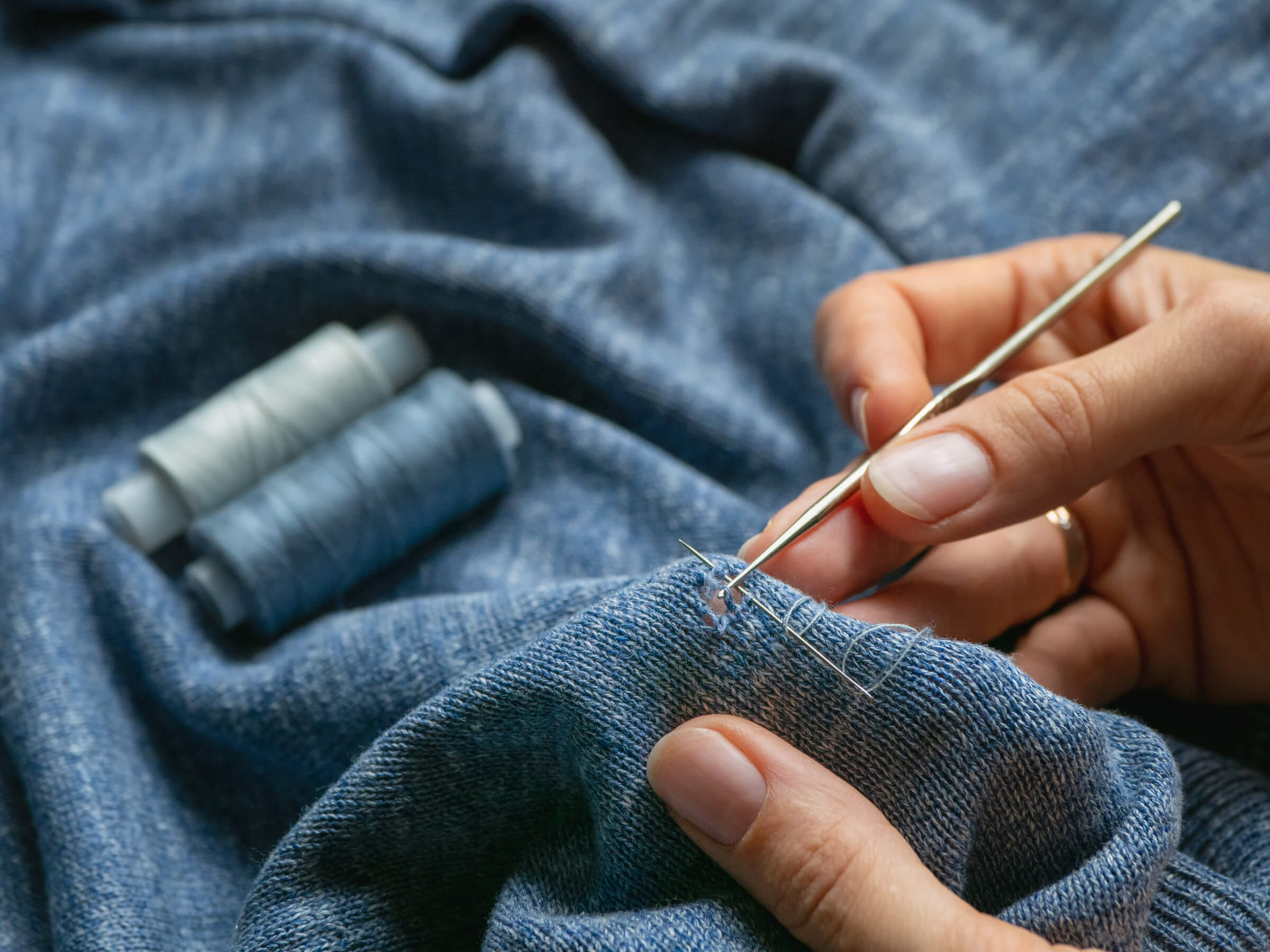What is circularity for apparel? Circularity in fashion gives garments longer lives and more possibilities. But more than that, apparel is designed to be worn more, created for reuse, repair, resale or recycling. And it means starting with safe, renewable, and recycled materials.
The end goal: Making a lasting change to combat the flagrant waste and overuse of resources that currently characterize the apparel industry. To make sustainability the new design for fashion, and circular business models the new approach to the fashion industry.
The pillars of circularity for apparel
Repair
The ability to repair a garment and continue using it is a fundamental of fashion circularity. Brands that make repairability central to their business demonstrate a willingness to acknowledge the changing shape of the market and consumer preferences. Making fashion repairable – and providing easy options for repair – has a number of positive, circular effects:
Extending a garment’s lifespan reduces the demand for the rapid turnover of new products and their easy disposal. By putting fewer garments on the market, brands can lighten their environmental footprint and resource use, encourage (or launch their own) repair services. This also aligns with growing consumer preferences for more sustainable practices.
Resale
The resale market is another way of extending garments’ lifespan. Giving apparel a second, or third, life drives the long-standing concept of secondhand stores and vintage shops. Consumers can connect with pre-owned fashion items and keep them alive and out of a landfill.
Resale or recommerce includes peer-to-peer sale of secondhand items (online or offline), third-party marketplaces (online and offline), and own-brand recommerce initiatives. Extending the value of second-chance fashion, it’s possible to add authentication and quality control measures as part of the resale process, which helps secure brand protection, platform credibility and consumer trust.
Repurpose
When a garment is repurposed in some way, this too extends the lifespan of the original piece. Using existing products, components or materials, a brand or consumer creates something new from something old. The resulting transformation keeps used goods out of landfills or from being destroyed en masse, reducing waste and environmental footprint. It creates something entirely new and unique in the world.
Upcycling and diversifying define a shift in the market and consumer behavior. Brands can be at the forefront of the repurposing movement, helping to promote a culture of resourcefulness and one-of-a-kind pieces built on their brand foundation.
Recycle
A fashion industry built around reuse and recycle principles will help move the apparel sector toward sustainability and circularity. Brands can reduce their reliance on raw materials and limit waste. At the same time, they can actively reduce environmental and social impact associated with the production and disposal of clothing. Brands can drive closed-loop systems where materials are recycled, reused, and regenerated.
Recycling encompasses everything from material recycling (collecting used clothing, sorting and processing and fiber extraction) to textile-to-textile recycling (regenerating fibers from old textiles and using these new fibers for new clothing). It also relies on product design and clear labeling and tagging and active consumer participation (e.g., take-back programs for discounts).
How to achieve circular fashion
These considerations on circularity for apparel are just the beginning. Making circularity real and realistic demands both the will of the brand and technology solutions. Tech needs to enable the sharing of supply chain and product information and transaction and customer data between brands, marketplaces and consumers, as a start.
Register now for Kezzler’s webinar, “Circularity: Repair, Resell & Recycle”. Learn more about how to achieve circularity in apparel by closing the loop.



